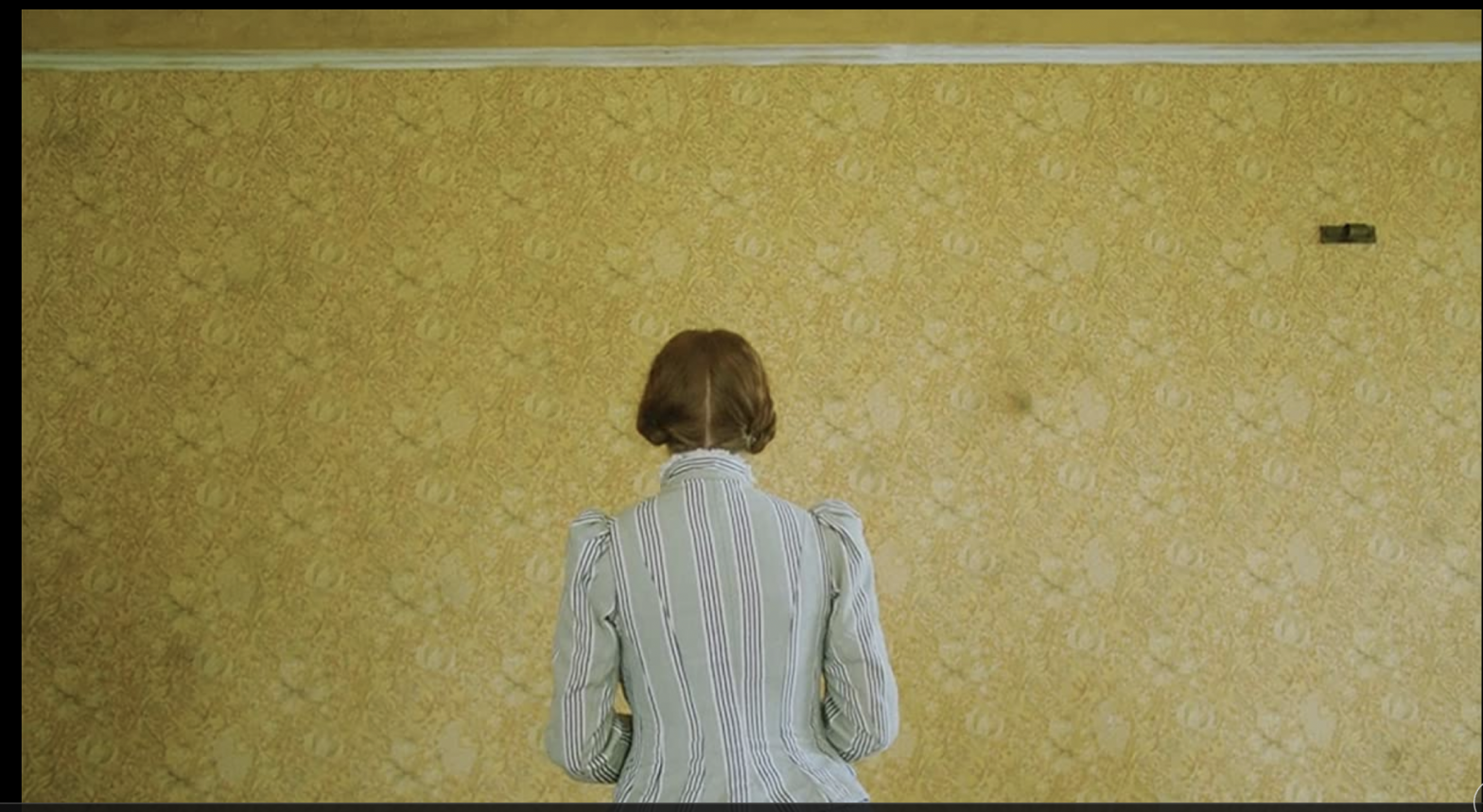I haven’t taught in years, but when I did, “The Yellow Wallpaper,” a short story by Charlotte Perkins Gilman, was a staple in the sophomore literature text. The film by the same name, adapted and directed by Kevin Pontuti, stays true (for all but the ending) to the source. Pontuti manages to capture the psychological distress endured by the story’s protagonist, but sluggish pacing and an annoying soundtrack make the one-hour and forty-minute runtime feel interminable at times.
Jane, a young mother suffering from depression, is relegated by her doctor husband to rest in a remote country estate. Dark yellow floral print wallpaper lines her stark room. As her depression deepens, she comes to believe that a woman is trapped behind the paper in the walls. Occasionally, Jane leaves her room to enjoy the lush, beautiful gardens, but slowly she falls further and further into a delusional stupor, brought on by what is likely post-partum depression. Eventually, she tears at the yellow wallpaper trying to free the woman trapped behind it, but in Pontuti’s telling, there is no escape.
Alexandra Loreth (as Jane) offers up a formidable performance, but she too falls into the sluggishness that drives the film. Still, Jane’s descent into madness plays out clearly and definitively. With Jane as the story’s narrator will only get her point of view and there are moments when doubt is cast about the roles the others play in her madness. Although, it is apparent that she is her own worst enemy, as the saying goes. Her well-meaning husband John (Joe Mullins) makes matters worse by insisting she not write, an outlet she feels will save her.
Pontuti’s setting is spectacular, really. It lends credence to Janes’s emotional isolation. And the wallpaper … it is indeed enough to drive someone over the edge – a shocking, dark, sunflower yellow with intricate floral patterns that might easily trick the eye and the mind. Jane’s wrought iron bed oddly stands in the center of the room which houses only a few other items. The property’s stunning garden is clearly a place of retreat and refuge for Jane, making it all the more distressing when the woman she believes to be behind the wallpaper escapes into her private sanctuary.
‘The Yellow Wallpaper’s’ ending diverts from Gillam’s original story – far more disturbing but does capture the essence of a gothic tale. Poor pacing aside, Pontuti’s rendering will please literature teachers everywhere, but will likely bore poor students to death. A great deal is right with the film but so much is equally wrong – the music, as mentioned, often sounds like an oboe played by a five-year-old and is enough to drive any sane person mad. Overall, I can only give The Yellow Wallpaper 3 out of 5 stars. It will have a small fan base.
